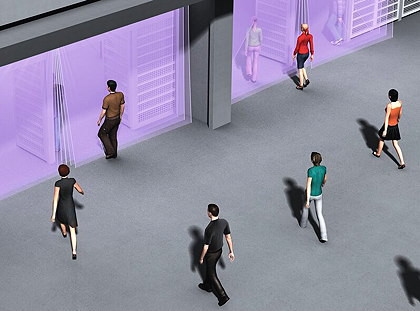- Home » News » Technology News
Custom sensor apps need no programming expertise

The German sensor-maker Sick has unveiled a technology that will allow automation users to create customised sensor- and edge-based applications without needing any programming experience. The technology – an enhancement of the company’s existing AppSpace platform – will allow users to link and configure predefined function blocks via a graphical user interface.
Sick has also announced digital technologies for administering digital twins securely and flexibly. A Web service called LiveConnect provides a secure standardised connection from sensors and edge gateways to the Asset Hub – a Web-based enterprise asst management system – or to other Sick or third-party applications. The Asset Hub will provide interactive views of individual sensors, machines or complete plants, thus delivering greater transparency, plant availability and process efficiencies. LiveConnect and Asset Hub are components of Sick’s IntegrationSpace, which provides all of Sick’s digital services and is a supplement to AppSpace.
Sick launched AppSpace in 2017 as an open platform on which systems integrators and OEMs could develop tailor-made applications based on its sensing technologies. But using the platform requires some programming skills, limiting its potential user base. The new graphical interface in the AppStudio program allows users without programming skills to create customised sensor applications, thus opening up AppSpace to a much wider audience.
“Automation concepts are rarely standard”, points out Dr Timo Mennle, Sick’s strategic product manager for AppSpace. Even when dealing with a standard problem, many projects need additional configuration and customisation work that can result in higher costs and installation delays. AppStudio allows user to create their own SensorApps to solve sensor applications without needing to program anything.
The starting point is figuring out what the sensor needs to do. “If a customer wants to differentiate between, and count, deodorant bottles using the cap colour, he creates a data flow from function blocks existing in a library,” Mennle explains. “After every step, he gets a preview of the result and can adjust the configuration right away.”
The open architecture means that there is an option to change the source code of the function blocks to implement more challenging and customised applications.
The growing community of AppSpace developers, both within Sick and externally, are adding to a downloadable library of applications called AppPool.

As examples of what the new platform can deliver, Sick has developed two applications to help companies implement Covid-19 social distancing rules. The first, called PeopleCounter, is based on a 3D Lidar sensor and can be used to differentiate people from objects over a large detection area. The second, called DistanceGuard, uses a 2D Lidar sensor to detect the space between two people and can, for example, be used to ensuring social distancing in supermarket queues.
Sick’s LiveConnect Web service will connect factory-floor sensors or edge gateways running SensorApps with its IntegrationSpace cloud environment, through which it will be possible to access virtual representations of the sensors and their data. Sick says this will open up “a new dimension in the world of sensors”, where data from the sensors is integrated into intelligent digital services. It is planning to add neural-network-based deep-learning capabilities to the IntegrationSpace portfolio.
Because these services are based on AssetHub and LiveConnect, they can be tailored to individual customers, which may not be operating in Sick’s traditional industrial markets
“Today, customers come to us with problems which have nothing to do with classical automation engineering dealing with sensor systems, logic and actuator engineering,” explains Christoph Müller, the company’s senior vice-president for product management. “Instead, they want to make business processes much more efficient. So the sensor gathers data which helps solve the problem and brings it to the data level.”
Sick is planning to release AppStudio commercially before the end of this year.





